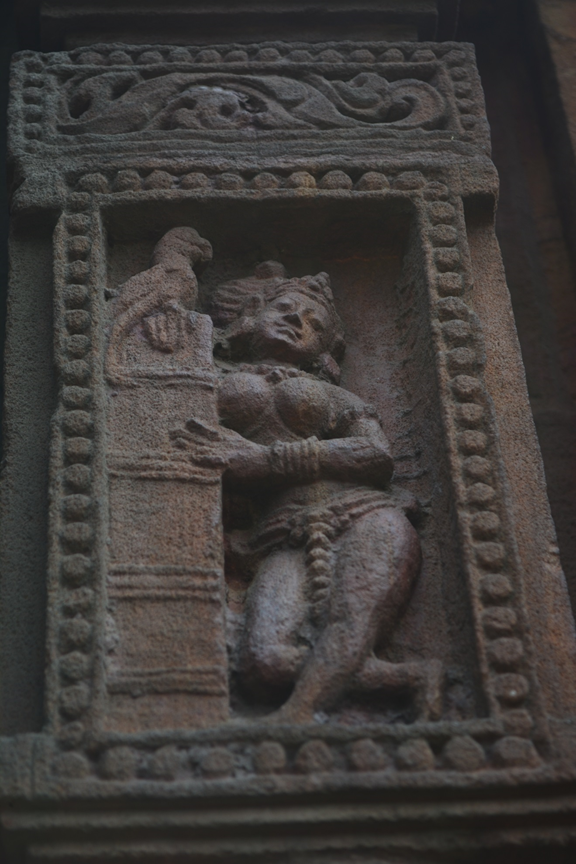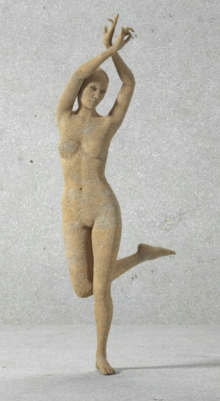A Brief History of Odissi | Digitally Repurposing Odissi | Odissi Gesture and Textuality
Digitally Repurposing Odissi
Breaking away from this textual canon has been the primary motive behind this digital reconstruction of movement. Here, I computationally choreograph gestures in ways that undermine the textual canon. I use an absurdity alongside bringing in the staccato, minimal, and personalized gesturing by the Mahari to surface one of the historically marginalized modalities of deploying gesture. In addition, I inlay pictures within the 3D sphere to further punctuate the textual communications of the Mudras. These pictures add contextual information and colors the 3D environment for the 3D model. The images do not bear any one-to-one correspondence with the gestures used. They are associated with the Mahari ritual practice as well as her own interpretations of her practice. According to Amrapalli Mahari, her practice recreates the childhood play of Krishna in Vrindavana where he and the Gopis (cow maidens) danced and sang in a divine play of exuberance and joy (Apffel-Marglin, 1985, p. 98). The Mahari ritual singing of the Gitagovinda also portrays this scene of merriment. Infusing images that refer to the ambient feel of Mahari ritual practice, I further interrupt the textual codifications of the gestures in the visual reception. The gestural deployment by Iteration I simultaneously cites as well as breaks away from the textualized classical Indian canon by contesting Odissi’s peripheral readability of gestures through the full-bodied reception of the Mahari. Here, gesture decontextualizes from the discursive body of Indian classical aesthetics but undoes a historical error by aligning itself with the marginalized historical figure of the Mahari.


^^ Examples of Odissi dancing bodies across media: temple sculpture, live body, and motion-capture digital avatar.
History has a constitutive role in my project that enables a different reading of the hypercodified gesticulation of the Indian classical body. The linguistic decontextualization and the historical recontextualization makes it possible for the Mahari to maintain Odissi’s constitutive outside with the potential to alter the meaning of gestural deployment at the moment of its usage. This iteration’s citing of the gestural vocabulary permeated through the performative qualities of the Mahari establish the Mahari as Odissi’s constitutive outside that potentially alters the meaning-making processes within the contemporary dancing body through mediation. Although, the citation of the Mudras connects the 3D animation environment to the Indian classical canon, the decontextualized and non-linear deployment of these classical aesthetics discards the classical harmony proposed by the ancient texts. In fact, the citation of the gestures breaks away from the linguistic dependence of Odissi by citing the embodied deployment of these gestures by the Mahari.
The reorientation within the digital medium of the prior linguistic communication of my Odissi movement to the performative non-linguistic Mahari gesturing creates the scope for the reembodiment of the Mahari in my movement practice, which in turn, infuses a somatic dimension to my textually overdetermined Odissi movement. Although, the gesturing operates within the citational chain of Sanskritized aesthetics animating the legacy of the classical canon, my embodied movement finds a connection to the full-bodied Mahari motility by repurposing the linguistic canon through citational decomposition. Even though it draws upon the ancient texts, it breaks with the contexts of these manuscripts. It introduces somatic noise initiated by the somatic dimensions of my body filtered through its digitized manipulations in the Motionbuilder software. The gesturing calls upon the powerful linguistic infrastructure of the classical canon, but that it breaks free from this ideological hold to nurture connections with the historically marginalized. I argue that the first iteration's gesturing imbued with the somatic markers of the Mahari infuses embodiment in my Odissi movement that is otherwise textually overdetermined and hypercodified. I echo dance and technology scholar Douglas Rosenberg’s (2012) theory of recorporealization in which he argues that the interactions between the dancer with her technological mediation recorporealizes her dancing body with the technical citations. Incorporating the visual analysis of Iteration I in my body, I punctuate my hypercodified linguistic gestures in Odissi with the somatic gesturing of the Mahari encoded with the technological markers of 3D digital animation. I exceed the verbal proscriptions of the gestural sign language infusing the somatic embodiment of the Mahari at the juxtaposition of my live and technologically abstracted, manipulated, and animated movement.










